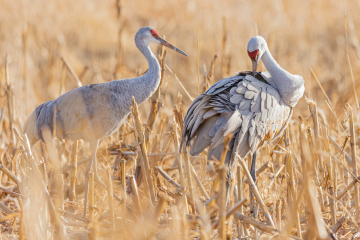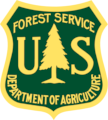The Missouri River Geographic Focus Area (GFA) comprises the 125-mile stretch of the river from Ft. Randall Dam, downstream to Ponca, Nebraska. The focus area includes the active river channel and its floodplain, which contains 28,500 acres of riparian and palustrine wetlands and about 6,000 acres of grassland.
Migrating waterfowl and shorebirds rely on the Missouri River’s stopover habitat; in addition, bare sandbars in the river channels provide nesting habitat for Interior Least Terns and Piping Plovers.
The Missouri River was once a complex and dynamic mosaic of channels, backwater wetlands, oxbows, wooded islands, and floodplain forests, but the river has been dammed upstream and channelized downstream of the GFA. Altered and diminished flows and sediment behind dams have led to channel down-cutting, which isolates the stream from its floodplain, further drying meadows and off-channel wetlands and hastening their conversion to agriculture. Purple loosestrife and Phragmites have invaded and become established along this stretch of the river.
The RWBJV’s conservation goal in the GFA is to provide technical resources and data sufficient to help conservation partners map and quantify available habitat and to describe the effects of different flow regimes on habitat conditions.
















